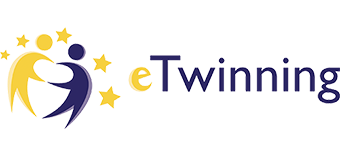Project ideas and resources
eTwinning projects are conducted between two or several schools, on study or transdisciplinary subjects. You have a wide range of examples of projects on subjects or themes in different languages from different countries.
Examples of eTwinning Plus 2017 Good Practices
The most successful projects that have been awarded the European Quality Label in 2017 are briefly described below and can be used as a source of inspiration for new educational partnerships.
- ‘Family in the children’s eyes’, Prof. Iulia Berdos (‘Alexandru cel Bun’ High School)
Description: The project manages to promote the idea of family among schools and students from extremely different environments, countries and cultures and to spin out through their collaboration a ‘silver thread’ of human values everywhere. Planning follows all the necessary steps and the virtual space is rich. The project is designed and implemented for students, aiming to make them interact with their partners. Many ways of working exist, such as sharing information, working on common themes and cooperation between transnational teams to create common materials such as collaborative stories. Activities are creative and innovative (e.g. Cinquins), and some have a social and educational impact (visits to orphanages). The final product – the online magazine – is attractive and can be used as a material or example in other projects. The project can be a model for topics related to community involvement, citizenship, social activism, intercultural knowledge.
Link to project page https://twinspace.etwinning.net/16806/home
- CRYSTALs, prof. Rita Godoroja (Spiru Haret High School)
Description: The project is distinguished by the originality of the chosen topic, but especially by the association between academic rigor and creativity. It is a good example of transdiplinarity, and the educational side of the project is given by the stimulation of self-knowledge, by analyzing moral values that the adolescent students involved, consider important. The development and management of the project by partner teachers are excellent, in all stages of the project, from planning to feedback, evaluation and dissemination. There are common products, the virtual space is well organized, although, unfortunately, transnational activities lack. The chosen ICT tools, which are used by students, not just by teachers, are appropriate to their age. The project may serve as a model for teaching STEM subjects with creativity and emotional involvement.
Link to project page https://twinspace.etwinning.net/13473/home
- Be KIND – Be Keen to Involve in Noble Deed, prof. Liliana Nederita (East Europe Foundation)
Description: This project, through its organization and not only, is an excellent example of a short-term project, organized with the occasion of an event, in this case International Random Acts of Kindness Week. Most student activities took place over a week, although preparatory activities, evaluation and completion of common products took place before or after it. Each day of the week was devoted to some kind of good deeds, made and documented with ICT means in all partner schools. The technology was also used by students, not just by teachers. The joint results of the project were numerous and appropriate: a webpage, a multilingual thematic dictionary in English, Romanian, Croatian, Ukrainian and Turkish languages, and an electronic magazine. Communication between students was real, on various channels, including Skype and Facebook.
Link to project page https://twinspace.etwinning.net/17464/home
- The world around us – seasons, prof. Oxana Coroleac (Technology Center for Children)
Description: It is a project by which young pupils (6-10 years) get acquainted to the evolution of seasons through different forms of artistic expression: music, painting, poetry, drama, collage, photography. Children got involved in both the reception and the creation of the artistic act, combining the two activities, for example by creating lapbooks based on Vivaldi’s music. The project has been well integrated into the life of partner schools by organizing artistic performances during a Spring Day. The communication between partners was real, despite the age of young pupils, and was achieved through several channels: videoconferencing, letters, small gifts, videos, etc. Knowing the partner’s culture included sharing culinary recipes, a common dictionary, etc. Organization and planning are clear and complete and it is worth noting the impact the project has had on students and teachers.
Link to project page https://twinspace.etwinning.net/10291/home
- Open the Gates to the Universe, Prof. Ana Ceban (‘Mihai Marinciuc’ Science High School)
Description: The project aims to attract elementary school students to science, giving them the role of small astronauts who will become familiar with simple notions of astronomy and space science through collaborative activities conducted in English. Student communication was a clear objective for teachers; videoconferencing was held, common themes were discussed and common products exist, including a project blog. Students have learned about the Solar System, life in space, or famous astronauts through museum visits, mutual learning, jointly created games. They exchanged experiments, written collaborative stories, and had as guest the mini-astronaut Yuri. Common activities, including transnational working attempts have resulted in a tangible common end product, made with collaborative and appropriate tools. The project is a model for learning through play and integrated at younger ages and has been awarded with a European eTwinning Prize.
Link to project page https://twinspace.etwinning.net/12520/home




